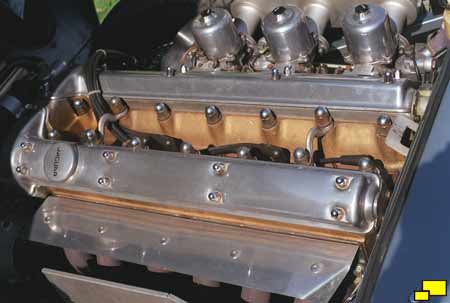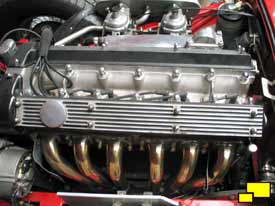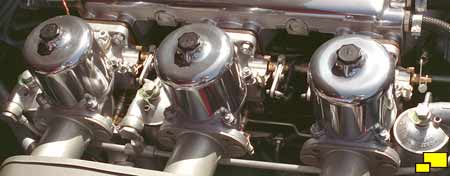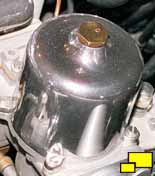|
The Jaguar E-type had muscle under its sensuous skin. The XK motor produced gobs of power with exceptional smoothness and sounds that were a delight for the senses. Whenever a list of the great automobile engines is compiled, the XK motor, along with Ford's flathead V8 and the Chevrolet small block, are almost always present.
As World War II was coming to an end, Sir William Lyons, the president and founding father of Jaguar, knew that commercial production would soon follow. He needed an engine and assembled a team of engineers to work on its design. The first iteration was called "XA"; "X" stood for experimental and "A" meant that it was the first in the series. The early designs were on paper only; the XE was the first to be built and tested. Things were well sorted out by the time of the XK design, hence the XK moniker.
The same basic motor (3.4 liters) first saw service in the XK-120 in 1948 and, with triple SU (Skinners Union) carburetors and 3.8 liters of displacement, was used in the XK-150S before the E-type. They were retired from volume production in 1987 in the XJ6 and still saw limited service in limousines produced until 1992. All told, XK Engines were in production for 44 years, a phenomenal record and a testimony to the integrity of the basic design.
The XK engine used in the Series I and II cars is an inline six cylinder unit, with double overhead camshafts, two valves per cylinder and a displacement of 3781 cc. (230.6 cubic inches) which was increased to 4235 cc in 1964. The heads are an aluminum alloy and the block was iron.
Although the factory rated the Series I engine at 265 hp., the figure is controversial and almost nobody believes it. Many insist that a more accurate figure is closer to 200 hp. and a few contend that it is even less!
|






